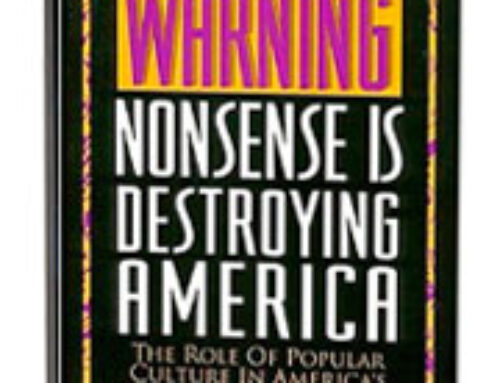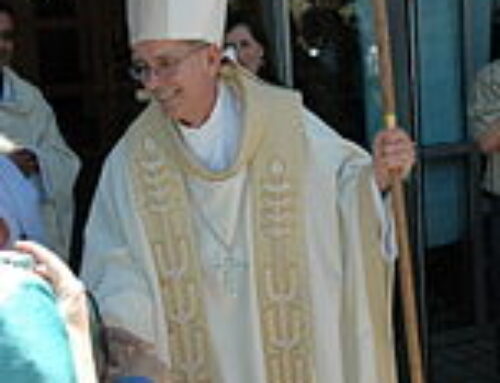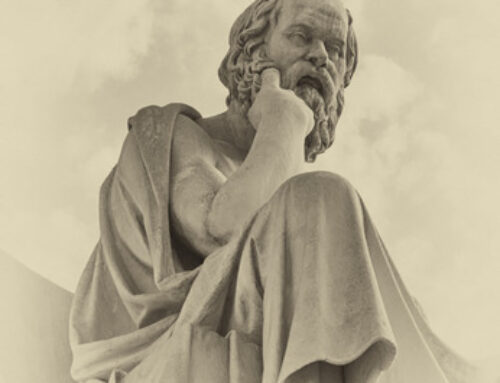 In the minds of many, including Catholic leaders, the Church’s sex scandal is a closed matter. They reason that the hierarchy have done all they can do—apologized to the victims of abuse and the laity in general and established procedures for identifying perpetrators, removing them from the ministry, and notifying authorities.
In the minds of many, including Catholic leaders, the Church’s sex scandal is a closed matter. They reason that the hierarchy have done all they can do—apologized to the victims of abuse and the laity in general and established procedures for identifying perpetrators, removing them from the ministry, and notifying authorities.
That reasoning is understandable, but flawed. The hierarchy have, indeed, taken those important steps and that is to their credit. But the issue cannot be considered closed until they effectively address the underlying causes of the abuse and cover-up, which continue to exist.
Pertinent questions include these: What events in the offenders’ lives led them to become abusers? Did they show signs of that inclination in the seminary? If so, why weren’t they dismissed? Were the seminaries somehow responsible for the sex abuse? For example, could the seminary experience, while not encouraging or condoning pedophilia, have cultivated promiscuous homosexual activity and thus blurred the crucial distinction between consenting adult and naïve teenager and created a fertile environment for sexual abuse?
Addressing questions like these requires special courage because they concern homosexuality, and Political Correctness forbids saying anything even slightly critical about that subject. Yet even awkward and difficult questions can be asked fairly and respectfully. Moreover, in this case they need to be asked in the interest of the Catholic faith. Let’s begin with the basic questions:
What percentage of priests are gay? According to the Gallup organization, 3.8% of the general population are gay. Estimates of the percentage of gay priests vary but all are significantly higher than 3.8%. Ross Benes, author of The Sex Effect, says most surveys conclude that 15% to 50% of U.S. priests are gay, whereas, Donald B. Cozzens, author of The Changing Face of the Priesthood estimates 20% to 60%.
What percent of gay priests are promiscuous? Promiscuity has long been a common characteristic of male homosexuality—not infrequently, the liaisons are not only brief but also anonymous—so there is no reason to doubt that many, perhaps most, gay priests are promiscuous. The incidence of AIDS among priests supports this view. Jon D. Fuller estimates that the death rate from AIDS among priests is “about double the death rate of the American male population.” Richard Sipe, who has spent over three decades studying sexual issues, believes that Fuller’s estimate is much too low and suggests the actual rate is eight times that of the general population.
What percentage of gay priests are pedophiles? From all indications, a rather small minority, roughly six percent, and for that reason it is grossly unfair to suggest that most or all homosexuals are pedophiles. That mistaken notion may be rooted in the John-Jay-Institute-Report finding that 80.9% of the abuse victims in the United States were male. Yet it is a non-sequitur to conclude that if the vast majority of sexually abusive acts were committed by gay priests, then the vast majority of gay priests are sexual abusers.
Were gay priests already gay when they entered the seminary? Political Correctness demands an unqualified “yes” to this question, based on the widespread belief that sexual orientation is in the genes. However, eight international studies of the sexuality of identical twins have disproven that notion, concluding that “if an identical twin has same-sex attraction the chances the co-twin has it are only about 11% for men and 14% for women.”
The clear conclusion of those studies is that sexuality is not genetic but instead a matter of social conditioning, personal choice, or both. The homosexual organization known as NAMBLA has always understood this—it’s motto has been “Get them by eight before it’s too late.” Why age eight? Because it is before puberty, a time when sexual response can be more easily influenced.
Seduction, of course, is possible at any age. Some young men may fall prey to it before they even think about becoming priests. But it also plausible that a young heterosexual seminarian, particularly one with little or no sexual experience, could be prodded or persuaded into homosexual experimentation and, as a result, find his thoughts, desires, fantasies, and sexual behavior re-directed from women to men.
It would therefore be reasonable to conclude that in a highly seductive homosexual environment a heterosexual seminarian could in time become gay, both in thought and deed. By “highly seductive” I mean one in which pressure is used to recruit people who have no interest in being recruited.
Was the environment in many Catholic seminaries homosexually seductive. Yes, without question. That fact has been well-established by many researchers, notably by Michael Rose in Goodbye, Good Men (2002). He details how professors used teaching materials that mocked Catholic doctrines and devotions, and ridiculed seminarians who respected traditional teachings. Homosexual activity was not only evident, but in many cases rampant. In some cases, seminarians were taught that celibacy required avoiding sex acts with women but not with men.
One seminarian explained that he was subjected to “unwanted verbal and physical conduct of a sexual nature,” and a “hostile, intimidating, and offensive environment” that included receiving “gay porn postcards” and being “invited to cruise gay bars.” Many seminarians were required to attend classes teaching them to accept homosexuality. If they objected, they were sent for psychiatric evaluations conducted by psychologists who were unsupportive of, and in some cases opposed to, Catholic teaching. Typically, the psychologists asked questions about sex. If the seminarian was approving or at least accepting of homosexuality, he was classified as healthy and mature; if he defended the traditional Catholic view, he was classified as immature or emotionally unhealthy, a judgment that could lead to his dismissal.
One priest who went through such a seminary experience reported, “I actually saw vocations tortured and killed by those who were supposed to be there to promote and foster vocations [but instead conducted] a ”real persecution and systematic extermination of orthodoxy and manly piety . . . .”
Rose summed up the priests’ “formation” in gay-controlled seminaries as follows:
Too often men who support the teachings of the Church, especially the teachings on sexual morality, are dismissed for being ‘rigid and uncharitable homophobes,’ while those who reject the Church’s teaching or ‘come out’ as gays to their superiors are given preferential treatment and then ordained to the Catholic priesthood. A corrupt, protective network starts in many seminaries where gay seminarians are encouraged to ‘act out’ or ‘explore their sexuality’ in highly inappropriate ways.
Unfortunately, the seminary scandal that Michael Rose exposed and others confirmed has been largely eclipsed by the sex-abuse scandal, no doubt because the latter is more sensational and therefore, from the media’s perspective, more newsworthy. But the seminary scandal is arguably more significant for three reasons: it cultivated the libertinism foundational to both promiscuity and sex-abuse; it contributed to the decline in the number of priests by excluding heterosexual seminary candidates; and it undermined Catholic teaching by giving prominence to heretical views in seminary courses.
The media’s almost exclusive attention to the sex-abuse scandal also resulted in their being oblivious to the most puzzling question concerning the seminary scandal:
How could Catholic seminaries have changed so quickly and radically? After all, the Catholic Church is not only the oldest and most conservative Christian denomination in western civilization. It is also the most theologically consistent in its view of sodomy as unnatural and sinful. So how could it possibly have surrendered the process of educating priests to homosexual activists contemptuous not only of the Church’s teaching on homosexuality but of Catholic teaching in general?
To claim the hierarchy did not know the scandal was happening would be absurd—the Church is too well organized and its communication system too sophisticated for such an institution-wide oversight to have occurred. No less absurd is the idea that the hierarchy ignored the seminary scandal in order to protect the Church. Abandoning the training of priests to the Church’s enemies can hardly be considered protecting the Church.
No, the only conceivable explanation of the homosexual control of seminaries is that it had the support of influential members of the Magisterium.
To understand how this happened, recall Michael Rose’s Goodbye, Good Men, which revealed that many heterosexual candidates to the seminary were screened out during the admission process, and many others were harassed or “psychologically tested” into leaving. Also, that heterosexuals who finished the seminary program and were ordained as priests, along with their homosexual classmates, had learned either to accept homosexuality as normal or at least to remain silent about their objections.
The ranks of assistant pastors were thus filled with homosexual priests and with heterosexuals who had learned to “go along to get along.” The latter may have promised themselves to speak their minds after ordination but later realized they had a better chance of becoming pastors if they maintained their silence a little longer. Then, after becoming pastors, they may have realized that continued silence was the only way to become a bishop. And so on. The problem in such cases, among clerics as among business people or elected government officials, is that there is always another advancement to seek in the future and thus another reason to be silent in the present.
So it was that over time the ranks of bishops and cardinals included homosexuals and silent heterosexuals still waiting for the elusive “right moment” to speak out.
How many members of the hierarchy are gay? More than a few bishops have been exposed as homosexual and some even as pedophiles, but statistics do not provide a sure answer to the question. However, more than a decade ago, Stephen Brady, who worked to eliminate the gay subculture in the Miami FL Archdiocese, reported that his priest-contacts claimed that 70% of U.S. bishops were homosexual. If this estimate is even half accurate, it goes a long way toward explaining why homosexual control of seminary education continued for so long and why the hierarchy did nothing about it.
The Church’s seminary scandal can be summed up as follows:
With at least tacit approval from influential members of the hierarchy, activist homosexual priests gained control of many seminaries, where they welcomed gay candidates, rejected strongly heterosexual candidates, seduced or intimidated weaker ones, and replaced traditional Catholic teachings with highly questionable or clearly heretical teachings.
Lest my summary be branded homophobic, let me emphasize that the seminary scandal is not about celibate homosexual candidates being accepted or, after completing their studies, being ordained as priests. It is about activist homosexual priest/professors misusing their offices to undermine the teachings of the Church, the purpose of their seminaries, and the intellectual and spiritual welfare of their students. By any rational standard, their behavior was despicable.
How difficult will it be to overcome the effects of the seminary scandal? The sex-abuse scandal was solved by creating new guidelines for priests’ contacts with young people and for removing offenders from the priesthood as soon as they are identified. But the solution to the seminary scandal will be much more difficult because its complications and consequences have been more numerous and widespread.
Removing heretical seminary leaders is the first and easiest step, which has already been taken by some dioceses. Another, equally important step is restoring the traditional, orthodox curriculum.
A much more challenging step is ensuring that priests, bishops, and cardinals are committed to solving the seminary problem—in other words, that they respect the Church’s teachings, are faithful to its prescriptions, and believe the role of the seminary is to develop traditional intellectual and moral qualities. Without this commitment, the changes in the seminaries will surely be short-lived. Unfortunately, many priests and prelates who attended the seminaries discussed above will have difficulty making the commitment because they believe what their professors taught them—that the Church’s teachings and vows are options rather than requirements, that homosexual acts are acceptable, and that to believe otherwise is homophobic, uncharitable, and (ironically) sinful!
To appreciate how conflicted such priests and prelates must be, consider the cognitive dissonance created by seminary professors teaching them that homosexual acts are acceptable while the Church required them to affirm that the very same acts represent “grave depravity,” are “intrinsically disordered” and “contrary to the natural law,” and therefore can “under no circumstances . . . be approved.” (Catechism of the Catholic Church, 2357-58)
Some would say the solution is for the Church to change its view of homosexuality, removing the stigma and accepting it as a legitimate, natural form of sexual expression. But to do that without overturning artificial contraception could well be, for many of the laity, the last theological straw.
Until a meaningful way of overcoming the consequences of the seminary scandal is found, the Church will remain seriously injured.
Copyright © 2018 by Vincent Ryan Ruggiero. All rights reserved



